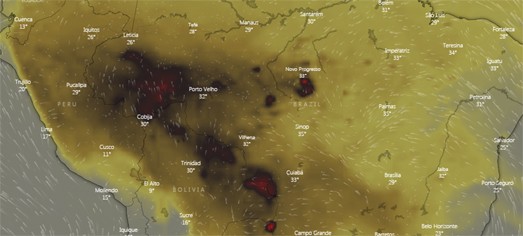Unfortunately the bad news continues: due to the determined attack on indigenous reserves within the Brazilian Rainforest, and the continual push by Poachers and others into these reserves, now condoned by Bolsonaro the Brazilian president, the fires are burning and doing particularly significant damage within in indigenous reserves.
Continue reading “More bad news from the fires in Brazil”USA has given a hunter permission to bring back body parts of a lion from Tanzania

Up until 2010, hunters in the USA could bring back parts of the lions that they hunted to the USA. Under Obama the import of body parts from African hunts was banned because of their inability to get control of the poaching was going on.
However from the second that Trump came to power, despite giving a message on most things, he has been careful to promote hunting. If you wish to import body parts at the moment, you have to apply for a licence on each occasion.
Continue reading “USA has given a hunter permission to bring back body parts of a lion from Tanzania”An official in Brazil is shot for trying to protect indigenous people
As well as fires, Brazil’s president Jair Bolsonaro approach’s to protecting the Amazon has been shown to lead to problems. His stance of supporting farmers and loggers in their theft of land, both from national parks or indigenous tribal land has reached its ultimate and some would say obvious conclusion.
Continue reading “An official in Brazil is shot for trying to protect indigenous people”Following on from the fires in the Amazon Rainforest story – Bolsonaro is all over the place
For anyone who reads this blog regularly and read my initial article in the run up to his election, you will have seen that this is not the sort of leader that impresses me or many people around the world. He is regularly referred to as the ‘tropical Trump’, and this is generally not a label given as a compliment.
However the fallout from last week’s news has been substantial and he has thrown out many different things in an attempt to distract the news from what he did.
Continue reading “Following on from the fires in the Amazon Rainforest story – Bolsonaro is all over the place”The impact of unregulated damage to the Amazon rainforest

For regular readers of this blog you will have noticed that I have written about Jair Bolsonaro on a few occasions. Unfortunately the fears that I have expressed appear to be bearing out in the behaviour of his government and the problems they are encountering.
Continue reading “The impact of unregulated damage to the Amazon rainforest”The climate and global warming is rising in its importance amongst the British public
Concern about the environment has grown rapidly over the last few years, particularly after the visit of Greta Thunberg who raised concerns that had not been given the attention that they should have done by British politicians.
Continue reading “The climate and global warming is rising in its importance amongst the British public”News in brief
Just 10% of fossil fuel subsidies just would pay the green transition
There is a continuous claim made from all sides that the costs of going green are simply too high, and that green electrical generation and transportation will never be affordable without subsidies.
Now all evidence looked at so far shows this is not true, however, why is this a standard we are looking at given that we are still providing huge subsidies for fossil fuels?
Continue reading “News in brief”Boreal forests burning at a rate not seen in 10,000 years
The Komodo Dragon National Park is increasing its prices dramatically

Komodo National Park is a very popular place to visit. It is in a relatively remote part of the Indonesian archipelago and this has led to it being one place on Earth where lizards still rule.
Continue reading “The Komodo Dragon National Park is increasing its prices dramatically”Forest elephants make a significant difference to the amount of Carbon that trees hold
It is only in the last couple of decades that genetic research was done to find the forest elephants of Africa are a completely different species to the bush elephants found out on the Savanna – which is the species most people see. Talking about these elephant species, bare in mind that the forest elephant has been shown to be more closely related to the mammoth than to the African Savanna elephant.
Continue reading “Forest elephants make a significant difference to the amount of Carbon that trees hold”










